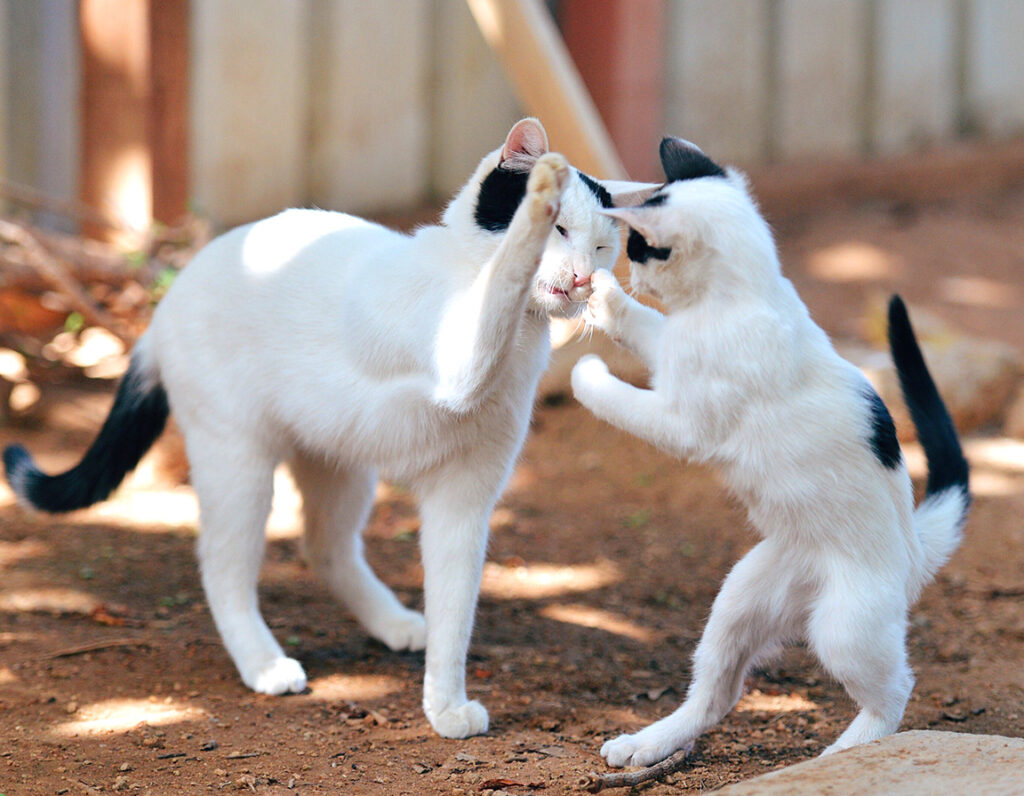Cats are fascinating creatures, but their interactions can sometimes be puzzling, especially when it comes to potential conflicts. Distinguishing between playful roughhousing and genuine fighting is crucial to maintaining harmony in your home. Here’s a breakdown of how to understand feline behavior and manage disputes effectively.
Signs of Playful Interaction
Before assuming your cats are fighting, observe their body language and sounds. Cats playing often:
- Chase each other energetically but take turns being the “chaser.”
- Wrestle with claws sheathed and minimal or no growling.
- Bounce back quickly without displaying prolonged stress.
Playful interactions often resemble mock fights but rarely escalate into aggressive behaviors. Look for a relaxed demeanor during and after their sessions.
How to Recognize a True Cat Fight
When cats are genuinely fighting, their actions and sounds become more intense:
- Body Language: Fur bristling, arched backs, and ears flattened against their heads signal aggression. A puffed-up tail is also a clear warning.
- Vocalization: Hissing, growling, or yowling are unmistakable indicators of conflict.
- Behavior: One or both cats may attempt to intimidate the other with prolonged staring, lunges, or even swipes with claws extended.
In these cases, the weaker cat might try to flee, but the aggressor may continue to pursue. This dynamic often occurs over perceived threats, such as territorial disputes or resource competition.
Causes of Feline Aggression
Understanding what triggers a cat fight can help prevent future conflicts:
- Territorial Issues: Cats are highly territorial and may feel threatened when another cat invades their space.
- Resource Competition: Limited access to food, water, or litter boxes can cause disputes.
- Stressful Introductions: Introducing a new cat to an established household without proper gradual integration can lead to fights.
Steps to Manage and Prevent Conflicts
- Separate Immediately: If a fight breaks out, avoid intervening with your hands. Use a loud noise, like clapping or a can of coins, to startle them apart.
- Provide Resources: Ensure each cat has its own food and water dishes, litter boxes, and resting spots to reduce competition.
- Gradual Introductions: When bringing a new cat into your home, keep the newcomer in a separate room initially. Slowly allow them to sniff each other through a barrier, like a door or gate, before supervised face-to-face meetings.
- Monitor Body Language: Be attentive to early warning signs of aggression to intervene before a full-blown fight erupts.
- Consult an Expert: If aggressive behavior persists, consider seeking advice from a veterinarian or feline behaviorist.
Do Cats Forgive Each Other?
Unlike dogs, cats don’t have strong instincts for reconciliation. After a conflict, they may avoid each other or show residual tension for some time. This behavior stems from their solitary nature in the wild. Patience and proper conflict management are essential to rebuild peace.

By understanding the nuances of feline communication, you can foster a peaceful coexistence between your furry companions. Remember, your role as a mediator is key to preventing and resolving disputes while keeping your home harmonious. For more on feline behavior and aggression, you can explore additional expert insights from reputable sources like veterinarians or behaviorists.
Enjoyed this post? Visit timmypets.com for more pet care tips, stories, and expert advice. Follow us on social media to stay connected and never miss an update!


